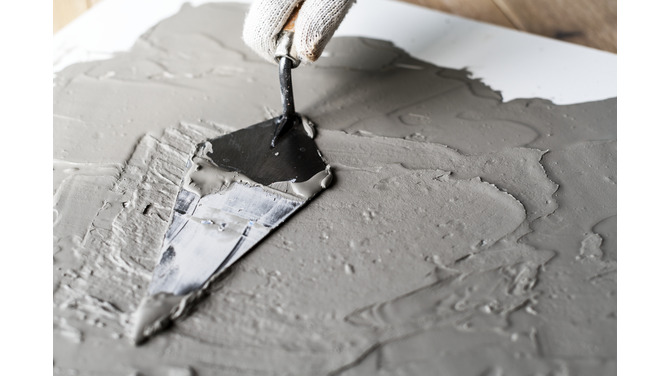Step-by-Step Guide to Applying Concrete Repair Mortar
Concrete structures, no matter how strong, can degrade over time due to environmental factors, heavy loads, or poor construction practices. That’s where concrete repair mortar steps in. Whether it’s surface cracks or deep structural damage, using the right materials and techniques can extend the life of your concrete significantly. In this guide, we’ll walk you through the step-by-step process of applying concrete repair mortar, recommend top-performing products from Redwop, and address everything you need to know about choosing the right mortar for different types of repairs.
Why Concrete Needs Repair
Concrete surfaces suffer wear and tear due to temperature changes, water infiltration, corrosion of steel reinforcement, or chemical exposure. Timely and proper repair helps prevent further deterioration and restores the structural integrity of buildings and infrastructure.
When you search for concrete repair mortar, you’re often looking to fix cracks, delamination, spalling, or full-depth structural damage. This guide will give you a clear action plan to achieve long-lasting results.
Tools and Materials You’ll Need
- Chisel and hammer
- Wire brush or grinder
- Water and sponge
- Trowel or spatula
- Mixing bucket and drill mixer
- Safety gear (gloves, goggles, mask)
Materials:
- Concrete repair mortar (select from cementitious, polymer-modified, or epoxy)
- Bonding agent
- Anticorrosive primer (if required)
- Curing compound (optional)
Step-by-Step Application Process
Step 1: Assess the Damage
Begin by inspecting the affected area. Identify whether it’s a surface crack, deep crack, or a structural issue. For structural concrete repair, always consult a professional engineer to evaluate the severity and cause.
Step 2: Prepare the Surface
Clean the damaged area thoroughly. Remove all loose material, debris, dust, or oil using a chisel, grinder, or wire brush. This step is crucial to ensure strong adhesion.
Tip: If reinforcing steel bars are exposed and corroded, remove the rust using a wire brush and apply an anticorrosive coating like BARGUARD to protect against future corrosion.
Step 3: Apply Bonding Agent
Before applying the repair mortar, a bonding agent must be applied to ensure good adhesion between old and new concrete. Use BUTABOND AR, a premium acrylic bonding agent by Redwop, which enhances adhesion and improves the performance of the repair mortar.
Step 4: Choose the Right Mortar
The appropriate type of concrete repair mortar should be chosen based on the nature of the damage.
- Cementitious repair mortar: Ideal for general patch repairs. These are easy to apply and cost-effective.
- Epoxy repair mortar: Perfect for high-strength and chemical-resistant applications. Use EPMOTAR ER for demanding repairs.
- Polymer modified mortar: Offers improved flexibility and adhesion, especially useful for external surfaces.
- For crack repair in concrete, low-viscosity injectable epoxies or flexible sealants may be required.
Step 5: Mix the Mortar
Follow the manufacturer’s instructions for mixing. Use clean water and mix with a mechanical mixer for best results. The mixture should be lump-free with a workable consistency.
Step 6: Apply the Repair Mortar
If the repair depth is greater than 20mm, apply the mortar in multiple layers using a trowel or spatula, pressing it firmly to eliminate any air pockets. For overhead or vertical repairs, use MICROCONE 100PT, a thixotropic mortar specially designed for such applications.
For larger RCC repairs, choose MATTCEM CL30 P, a ready-to-use repair mortar suitable for load-bearing concrete elements.
If you’re in a rush or working under time constraints, go for MICROCONE 2A, a fast-setting mortar from Redwop, ensuring repairs are completed quickly without compromising on quality.
Step 7: Finishing and Curing
After completing the surface, ensure proper curing to avoid quick drying and potential cracking. Cover the repaired area with a wet cloth or apply a curing compound if necessary.
Specialized Repair Solutions from Redwop
Bonding Agent
BUTABOND AR – An acrylic bonding agent that provides strong adhesion between existing and new concrete surfaces. Ideal for use in all kinds of concrete repair mortar projects.
RCC Repairing
MATTCEM CL30 P – High-performance mortar designed for structural concrete repair, especially useful in columns, beams, and slabs.
RCC Repairing (Thixotropic – Vertical & Overhead)
MICROCONE 100PT – Specially formulated for overhead and vertical repairs, this thixotropic mortar stays in place and does not sag.
Epoxy Mortar
EPMOTAR ER – Heavy-duty epoxy repair mortar ideal for industrial floors, machine foundations, and areas exposed to aggressive chemicals.
Anticorrosive Coating
BARGUARD – A dual-component anticorrosive coating that protects steel reinforcement before applying the repair mortar.
Fast Setting Mortar
MICROCONE 2A – A fast-setting mortar designed for emergency repairs, patching tasks, or use in low-temperature environments.
Underlay & Overlay Screed
REDOKRETE 515 – Ideal for leveling or resurfacing concrete floors before final finishes. Can be used both as underlay and overlay.
Redwop: Your Trusted Construction Chemical Partner
At Redwop, we’re committed to delivering high-quality construction chemicals that guarantee performance and durability. Our range of concrete repair mortar solutions are formulated using cutting-edge technology and have been tested for all types of repair environments. From epoxy to polymer-modified to fast-setting mortars, Redwop has a tailored solution for every repair job.
We don’t just offer products — we offer reliability, support, and innovation. Whether you’re a contractor, builder, or project owner, choosing Redwop means choosing the best in construction chemical solutions.
Conclusion
Concrete repairs don’t have to be overwhelming. With the right tools, a clear process, and high-quality materials from Redwop, you can restore structural integrity and prolong the life of your concrete structures. Whether it’s minor crack repair in concrete or full-scale structural concrete repair, using the appropriate concrete repair mortar makes all the difference.
Explore Redwop’s extensive product range today and experience why we’re one of the leading construction chemical manufacturers in the industry.
FAQ's
Concrete repair mortar is used to fix damaged or deteriorated concrete surfaces, restore structural integrity, and prevent further cracking or spalling.
Yes, when using the correct concrete repair mortar and proper application techniques, cracks can be repaired effectively and permanently.
Absolutely. Proper cleaning and prepping ensure the mortar bonds well and lasts longer. This includes removing loose debris, moisture, and oil.
Structural concrete repair involves restoring the load-bearing capacity of damaged concrete structures using high-performance materials like epoxy or polymer-modified mortars.
Redwop is a trusted manufacturer of construction chemicals offering high-quality, durable, and easy-to-use concrete repair mortar and other solutions backed by expert support.

